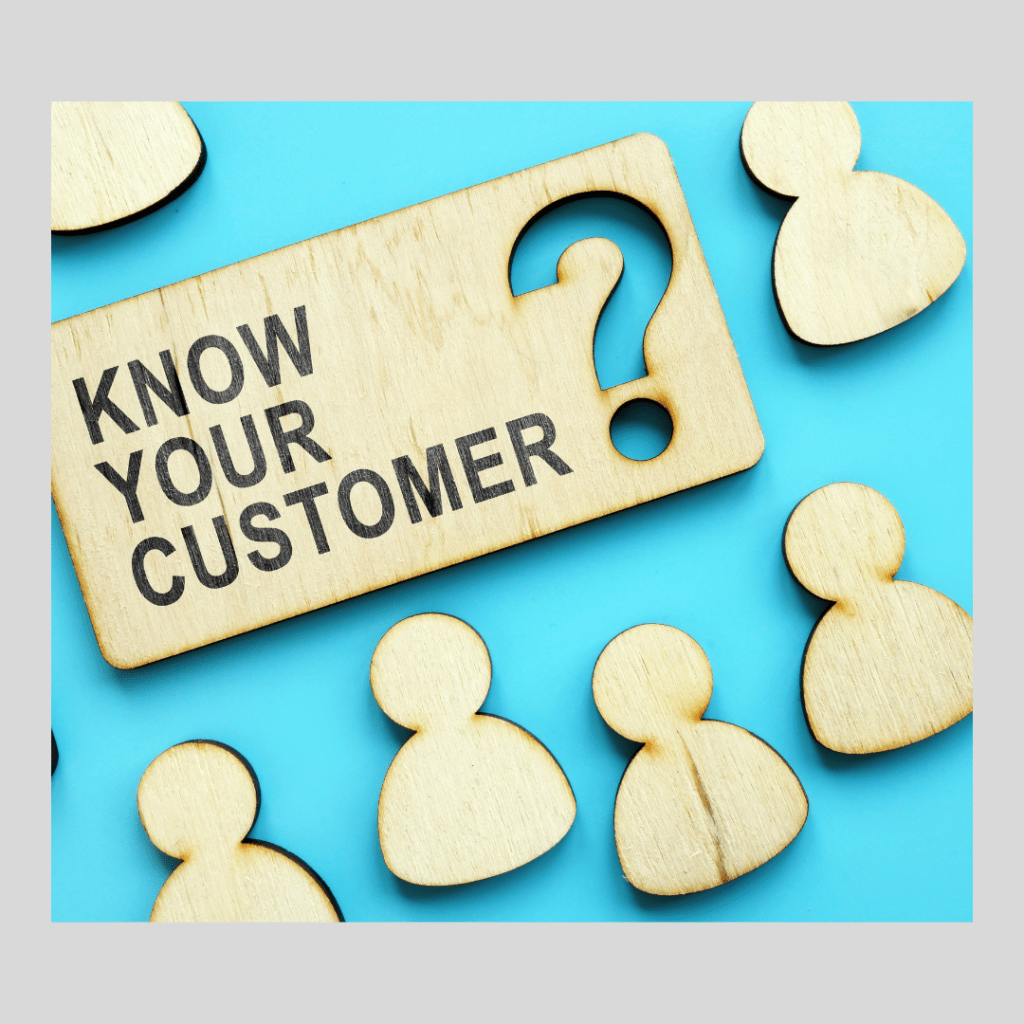If you’re going to make a success of marketing your business, you need to hone in on what is the best niche for you to be in. What will sell well? What will make you the most money?
What is a niche market?
A business niche is a focused area of a broader market that your business specifically deals with. It doesn’t matter whether your business is in a unique industry or a saturated market, it’s really important to differentiate yourself from your competition, as this is what helps you to win your audience.
You might like everything you do, but in order to be a successful business, you need to be able to distinguish your brand from your competitors, find what you are really good at and establish yourself as a dominant leader in that area. Even the biggest names can’t be everything to everyone; there are always going to be those small groups of people who need a particular product or service not met by the bigger companies…which is where the small business can step in.
What are you good at?
This first question is probably the most important. It’s not ‘what would you like to be good at?’ You need to be really honest with yourself – where do your talents really lie? What skills do you have? What do you enjoy doing? Once you have decided what you are good at, make a list of your skills and talent in that area. For example, if you love knitting, crocheting and sewing, which one do you excel in?
Once you know which you are best at…let’s say knitting for example, then you need to look at what skills and talent you have. So, it might be knitting baby clothes, knitting adult clothes, knitting toys – put the things you enjoy making most at the top of the list and so on, down to the ones you least enjoy.
What do potential customers need from your list?
This is where you need to do some research. Of the things you are best at making, what is popular? You can look on Etsy, eBay, Shopify and Amazon – are the products you are good at making doing well? Make a list of the things people need from your list of what you do well…then look at these questions and do some research.
- Do you solve a particular problem for customers?
- Is your product(s) something that people will come back for time and time again? This is important for repeat business.
- If there are other people selling the same as you, can you offer something unique that they don’t?
- Who does your product appeal to? Can you expand that to include other groups? For example, if your product appeals to an older age group, can you make it more appealing to a younger audience. The bigger your product appeal, the more you will sell.
What will people pay for?
Now you know what is marketable, which do you think people will pay the most money for…put your products in order of price…from high to low. You now have your niche – your list of the products you like to make, that you’re good at making, that have a potential audience and that are sellable.
Market, market, market
Now you have your niche and know what is marketable, it’s time to actually market it. If you are a small business, marketing is all the more important as you won’t necessarily have a huge brand following, nor the money to spend on expensive and extensive advertising. So, part of your marketing strategy will be to stand out in the crowd. I wrote this article a while ago, but it is still relevant and will give you some tips on standing out in the crowd.
How to make your small business stand out in the crowd
Hopefully you will pick up some great tips!
You should try to spend at least an hour a day promoting your business…and some things are much easier than others – here are some quick-win tips to help you promote your business that don’t cost the earth.
- Always remember that YOU are your business. No matter what you do or where you are, everywhere is a business promotion opportunity. Your image largely reflects on your business. Although we all try not to, most of us do judge people on our first impression of them…so make sure that you always give a great first impression.
- Your social media pages are the obvious choice for this list – they don’t cost anything and you can reach your target audience by publishing the right kind of content that will appeal to them.
- Always carry business cards as you never know who you might meet and if you don’t carry them, you could be missing an opportunity to get someone to contact you.
- Can you leave flyers or business cards at places where your potential customers are likely to be…at the gym, hairdressers, beauty salon – places you know that your target market hangs out!
- Talk to people wherever you go – if you’re in the Doctor’s surgery waiting room, strike up a conversation with someone…too many of us sit in silence in these places…do you take your children to sport events? If you do, you’re likely to be hanging around with other parents…talk to them. There are always opportunities to strike up conversations and promote your business.
- Attend networking events…again, this puts you in front of potential customers face to face…sell yourself and your business.
- Sponsor a local event or charity – or run a small event for charity in your own home or garden.
- Host a seminar or training event and share your skills – a great way to get your business name out there.
- Collaborate with another business which complements yours and vice versa. For example, if you do hair for weddings, you could collaborate with someone who does make up or flowers. Promote each other’s business on social media and on your websites.
- Give your website/social media pages a facelift to keep it fresh and don’t forget to regularly change your cover photo and profile pics so they are up to date.
There are many other small ways you can promote your business and, as I said earlier, it doesn’t have to cost the earth – the most valuable thing you can invest in your business is your time.
If you have any questions, or would like to have a chat about your niche and target audience, contact me or message me on social media. Alternatively you can email me – cindymobey@outlook.com


























 We all want our businesses to stand out from the crowd. Although it takes some time and effort, it’s worth it to have a unique identity that is instantly recognisable. Here are a few ideas that can help you along your way to having your own brand identity.
We all want our businesses to stand out from the crowd. Although it takes some time and effort, it’s worth it to have a unique identity that is instantly recognisable. Here are a few ideas that can help you along your way to having your own brand identity. The first thing to do is to think about a mission statement for your business, which is a short sentence about what your purpose is. We all know Nike’s tagline, ‘Just Do It’ but did you know that their mission statement is ‘To bring inspiration and innovation to every athlete in the world’. So their mission statement encapsulates everything that the company is about and wants to achieve in one short sentence. This is no mean feat, but achievable for your business with a bit of thought. You could always get a few friends round and have a ‘get my mission statement’ party…but make sure you work on the statement before you start drinking…or you could have some very interesting stuff!
The first thing to do is to think about a mission statement for your business, which is a short sentence about what your purpose is. We all know Nike’s tagline, ‘Just Do It’ but did you know that their mission statement is ‘To bring inspiration and innovation to every athlete in the world’. So their mission statement encapsulates everything that the company is about and wants to achieve in one short sentence. This is no mean feat, but achievable for your business with a bit of thought. You could always get a few friends round and have a ‘get my mission statement’ party…but make sure you work on the statement before you start drinking…or you could have some very interesting stuff! Brand Colours – The colours you choose are more important than you might think – according to research by web design and marketing company, WebPageFX, people make a subconscious judgement about a product in less than 90 seconds of viewing, and a majority of these people base that assessment on colour alone. In fact almost 85% of consumers cite colour as the primary reason they buy a particular product and 80% believe that colour increases brand recognition. Wow! That’s quite powerful.
Brand Colours – The colours you choose are more important than you might think – according to research by web design and marketing company, WebPageFX, people make a subconscious judgement about a product in less than 90 seconds of viewing, and a majority of these people base that assessment on colour alone. In fact almost 85% of consumers cite colour as the primary reason they buy a particular product and 80% believe that colour increases brand recognition. Wow! That’s quite powerful. Fonts – When looking at your brand for the first time, people will notice the colours and also the font – the way the brand name is written. There are so many different fonts, so try and choose one or two that enhance your business name…for example if you sell vintage jewellery, look at a vintage font.
Fonts – When looking at your brand for the first time, people will notice the colours and also the font – the way the brand name is written. There are so many different fonts, so try and choose one or two that enhance your business name…for example if you sell vintage jewellery, look at a vintage font. Our customers are the lifeblood of our businesses, so it’s crucial to gain new customers and to retain the existing ones. At this time of year, I’m always thinking of ways that I can grow my customer base, so after a brainstorming session, here are some of the ideas I’ve come up with…
Our customers are the lifeblood of our businesses, so it’s crucial to gain new customers and to retain the existing ones. At this time of year, I’m always thinking of ways that I can grow my customer base, so after a brainstorming session, here are some of the ideas I’ve come up with… Develop a calendar for your newsletter, planning specific activities that run throughout the year, for example, something around special times of the year; Valentine’s day, Easter, Christmas, Halloween etc. It’s also important to promote your newsletter everywhere; on your website (via an opt-in link or ‘sign up to our newsletter’ page; put it on the bottom of your email signature or on invoices and receipts; include details in any order you send to customers and if you speak to a customer on the phone, ask if they’d like to receive regular updates from you about your products.
Develop a calendar for your newsletter, planning specific activities that run throughout the year, for example, something around special times of the year; Valentine’s day, Easter, Christmas, Halloween etc. It’s also important to promote your newsletter everywhere; on your website (via an opt-in link or ‘sign up to our newsletter’ page; put it on the bottom of your email signature or on invoices and receipts; include details in any order you send to customers and if you speak to a customer on the phone, ask if they’d like to receive regular updates from you about your products. Ask for your customers’ opinions on your products or services. Is there something you could be doing better? Customers like to feel valued and it is good customer service practice to ask a customer what they think, listen to their answer and act upon it. It shows you listen. You could run a short survey and ask opinions – again, give an incentive to reply. You could put something like this at the beginning of the survey in the introduction… “We place a high value on our customers, so we would like to ask you to take five minutes of your time to answer a few questions about the products and services you receive from us. If you complete this survey, you will receive 10% off your next order as a thank you for giving us your opinion.” People like to be asked to help, like to give their opinion and most of all, like to get something in return so they feel that their opinion matters to you.
Ask for your customers’ opinions on your products or services. Is there something you could be doing better? Customers like to feel valued and it is good customer service practice to ask a customer what they think, listen to their answer and act upon it. It shows you listen. You could run a short survey and ask opinions – again, give an incentive to reply. You could put something like this at the beginning of the survey in the introduction… “We place a high value on our customers, so we would like to ask you to take five minutes of your time to answer a few questions about the products and services you receive from us. If you complete this survey, you will receive 10% off your next order as a thank you for giving us your opinion.” People like to be asked to help, like to give their opinion and most of all, like to get something in return so they feel that their opinion matters to you. How do you ensure you provide good customer service? Well, firstly make sure that there is a clear and easy way for customers to communicate with you – in person, by phone or email and that when they do contact you, you reply in a timely fashion. Always have a positive and friendly outlook and attitude to your customers. Pay particular attention to any customer concerns or complaints. If a customer complaints, they are giving you the opportunity to resolve a problem – if you do this in a fast, effective and friendly manner, they will remember that and refer you to their friends and family. Always remember that the reputation of your business relies heavily on providing excellent customer service.
How do you ensure you provide good customer service? Well, firstly make sure that there is a clear and easy way for customers to communicate with you – in person, by phone or email and that when they do contact you, you reply in a timely fashion. Always have a positive and friendly outlook and attitude to your customers. Pay particular attention to any customer concerns or complaints. If a customer complaints, they are giving you the opportunity to resolve a problem – if you do this in a fast, effective and friendly manner, they will remember that and refer you to their friends and family. Always remember that the reputation of your business relies heavily on providing excellent customer service.
 Make yourself or your business the answer to a problem. Is there a problem out there that you can solve with your products or services? Do some research online and find out…then market yourself/your business, letting people know that you have the solution to their problem.
Make yourself or your business the answer to a problem. Is there a problem out there that you can solve with your products or services? Do some research online and find out…then market yourself/your business, letting people know that you have the solution to their problem. Network with others. Find local groups or networking events, where you can meet like-minded people and exchange business cards and details. If you have a product and there’s a local trade fayre, go along and give out flyers and talk to as many people as you can. Don’t forget to also network online too – places like Google + and Facebook groups are great for this.
Network with others. Find local groups or networking events, where you can meet like-minded people and exchange business cards and details. If you have a product and there’s a local trade fayre, go along and give out flyers and talk to as many people as you can. Don’t forget to also network online too – places like Google + and Facebook groups are great for this. Think about setting up a workshop. Although not exactly a quick win, is there somewhere local where you can share your knowledge through a workshop? People still enjoy learning face to face and this can bring you great new contacts. If you prefer to teach online, you could set up a webinar.
Think about setting up a workshop. Although not exactly a quick win, is there somewhere local where you can share your knowledge through a workshop? People still enjoy learning face to face and this can bring you great new contacts. If you prefer to teach online, you could set up a webinar.
 Whether you choose to send your newsletter out in print format, or as an online version on e-mail, it’s important to decide the frequency. Most of my clients send out newsletters by email on a monthly basis, so they can be a bit longer than if you are sending out something each week. The most important thing is that the content is timely and relevant, adding some sort of value to your customer. For example, I send out a monthly newsletter for a garden centre – as well as including any news about new stock and special offers, we also include monthly hints and tips on jobs that need doing in the garden that month. We’ve also run a series of articles over a few months on planning the garden for 2014 – this encourages customers to take a good look at their garden, decide what worked well last year and what didn’t, and gives advice on plants and shrubs without doing the ‘hard sell’.
Whether you choose to send your newsletter out in print format, or as an online version on e-mail, it’s important to decide the frequency. Most of my clients send out newsletters by email on a monthly basis, so they can be a bit longer than if you are sending out something each week. The most important thing is that the content is timely and relevant, adding some sort of value to your customer. For example, I send out a monthly newsletter for a garden centre – as well as including any news about new stock and special offers, we also include monthly hints and tips on jobs that need doing in the garden that month. We’ve also run a series of articles over a few months on planning the garden for 2014 – this encourages customers to take a good look at their garden, decide what worked well last year and what didn’t, and gives advice on plants and shrubs without doing the ‘hard sell’. your website; increase engagement to your brand; create a buzz for a new product or service? The type of goals you have will help you create a more effective newsletter. For example, if you want to send more traffic to your website, you could include an excerpt from an article that will generate interest in your products and then direct them to the full article on your website, or you could just send an introductory paragraph from the newsletter, but keep the full newsletter on your website, so customers have to go to your website to read the full article. Similarly, you could give them a taster of a special offer, but point customers to your website for full details.
your website; increase engagement to your brand; create a buzz for a new product or service? The type of goals you have will help you create a more effective newsletter. For example, if you want to send more traffic to your website, you could include an excerpt from an article that will generate interest in your products and then direct them to the full article on your website, or you could just send an introductory paragraph from the newsletter, but keep the full newsletter on your website, so customers have to go to your website to read the full article. Similarly, you could give them a taster of a special offer, but point customers to your website for full details. Of course, a newsletter is only one of the marketing tools you can use and it’s always best to use a variety of tools to engage your customers. I’d be interested to hear your thoughts on the role of newsletters. Do you use them for your business?
Of course, a newsletter is only one of the marketing tools you can use and it’s always best to use a variety of tools to engage your customers. I’d be interested to hear your thoughts on the role of newsletters. Do you use them for your business?